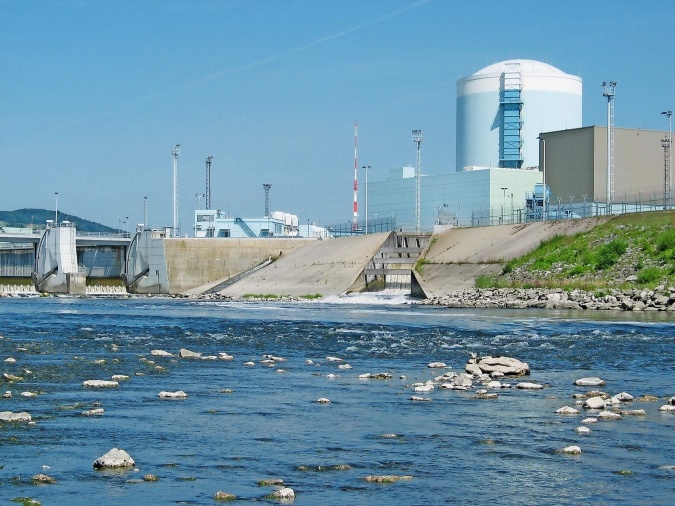Pragmatic Lyricism. Putin’s Visit to Slovenia
In
Login if you are already registered
(no votes) |
(0 votes) |
Ph.D. in History, Senior Research Associate, RAS Institute of Slavonic Studies
The Russian President’s visit to Slovenia had been widely advertised. Unlike Vladimir Putin’s recent talks with Prime Minister of Serbia Aleksandar Vučić which, for example, were announced only a few hours before the meeting actually took place, this trip was made public knowledge seven days before the event. In the run-up to the meeting, much attention was paid to the humanitarian aspects of the Russian President’s visit: a number of publications pointed to the “diplomacy of toasts and resorts” nature of the talks (to use Sergey Markedonov’s term). However, looking at the situation in the broader context, we can see that the visit had a very pragmatic grounding and certainly was nothing out of the ordinary.
The talks in Slovenia marked the third time in the past two months that the President of the Russian Federation had met with a leader of a country in Southeast Europe. On May 26, Putin welcomed the Prime Minister of Serbia, before heading off on an official visit to Greece on May 27–28. We could also add the active dialogue that opened up between President Putin and Recep Erdogan in July and the general warming of relations between Russia and Turkey.

REUTERS/Srdjan Zivulovic
Slovenia never really did disappear from the Russia’s diplomatic radar. Summit meetings have been held between the two countries at least once per year since 2009. The cooperation was not interrupted in 2014–2015: an intergovernmental commission on trade, economic, scientific and technical cooperation continued its work; the two states signed agreements; and Ljubljana continued to develop ties with individual constituent entities of the Russian Federation (with the Republic of Tatarstan, for example). Dmitry Medvedev’s visit to Slovenia on July 26–27, 2015 marked the first time that a Russian senior official had visited a NATO country since the beginning of the Ukraine crisis.
Preserving and even developing contacts at this difficult time speaks to the importance of bilateral relations for both countries. Just before the crisis began, the trade turnover between Russia and Slovenia was EUR 1.4703 billion where imports from Slovenia accounted for EUR 1.018 billion and export accounted for EUR 451.5 million. In fact, Slovenia (with a population of just 2.06 million people) is the only country that demonstrated a trade surplus with Russia, despite Russia’s significant oil and gas exports. This is because Russia imports technological products from Slovenia. In an interview with the Voice of Russia radio station during her official visit to Moscow in late 2013, then Prime Minister of Slovenia Alenka Bratušek said: “We are strategic partners and maintain a regular political dialogue at the highest level.” Before the crisis, Russia was one of Slovenia’s six priority markets [1].
Worsening relations between Russia and the West have naturally effected Slovenia. In 2014, Russia–Slovenia trade turnover fell by 4.5%; in 2015, it shrunk by more than 40% to less than EUR 1 billion.
In an interview with Izvestiaon July 22, the Slovenian Ambassador to Russia Primoz Sheligo noted that Slovenia has lost around EUR 10 million just from the ban on the supply of milk and dairy products. This is a significant sum for a small country.
The visit was thus intended to assess the results of the work carried out “in crisis mode” over the past two-and-a-half years. Judging from statements made by Slovenian officials, there is reason to hope for something more. What can we expect from Russia–Slovene relations?
The South Stream is still being discussed. The Slovenians are optimistic and still hope the project will eventually be implemented. However, given that the process depends on a wide set of circumstances, it is difficult to take these hopes seriously. Mentioning of South Stream was more of a curtsy to the Russian side, and a reminder that Slovenia had fulfilled all of its obligations with regard to the project.
As the Slovenian Ambassador noted, 28 projects are under way in various spheres – primarily in pharmaceuticals, which are strategically important for Russia in terms of import substitution, but also in telecommunications, engineering and agriculture.

www.atomic-energy.ru
Krško Nuclear Power Plant
Cooperation in the energy sector could also be fruitful. Rosatom could undertake reconstructing the Krško Nuclear Power Plant, which is operated jointly by Slovenia and Croatia. Projects could be carried out in the field of water resources and renewable energy. Right now, Slovenia has 44 hydroelectric power stations on 24 rivers. 10 more hydroelectric power stations are planned to be built in the next 20 years, which could be of interest to Russian companies (RusHydro, Inter RAO and Power Machines, for example).
In 2015, Russia and Slovenia signed a Memorandum on the Joint Work of Third Countries’ Markets. Russia is thus implementing its right to become a bridge to the Eurasian Economic Union market, and perhaps even the other regions where the positions of Russian diplomacy are strong and competition is not as fierce.
But even this ideal scenario has its limitations. The Agreement on the Stimulation and Mutual Protection of Capital Investments has still not been ratified, and such documents are usually signed at the initial stages of developing partner relations between countries.
Another obstacle is the sanctions regime and the political stance taken by Slovenia. Despite all the warm sentiments, Slovenia toes the official European Union line and stands by the tough policy adopted with regard to Crimea. An interview given by President of Slovenia Borut Pahor to Russia Today, which at one point turned into a full-blown argument with the interviewer, says a lot in this regard.
For Slovenia, rapprochement with Russia is aimed at achieving certain “individual privileges”, while maintaining loyalty to the European Union. And there are commemorative motives behind this, as the monument opened by Putin was erected over the course of one year. But the question will soon be whether Russia really wants to use economic pressure to put together an alliance of “dissident countries” within the European Union. Or is business more important than politics? The sanctions regime can be bypassed by founding joint Russian–Slovenian enterprises, which is exactly what the company Krka is doing.
A third factor is the reaction of the European Union. Even if Russia does not have a political agenda, this is how it will be interpreted. On July 29, the Reuters news agency published an article suggesting that President Putin’s visit to Slovenia was yet another part of Russia’s cunning plan to undermine unity within the European Union. The article names Slovenia, Hungary, Cyprus, Slovakia and Bulgaria as countries that are potentially susceptible to Russian influence. Panic statements have become the norm: “It’s getting harder to hold the line,” were the words that one, unnamed diplomatic source had for Reuters.
There have probably been fewer opportunities for the European Union to influence these countries than there have been to influence Poland, for example. And there are a number of reasons for this. But it is telling that the list of countries that are competing for the role of “Trojan Horse” includes not only the traditionally “fraternal” countries, but also Bulgaria, which had a hand in the failure of the South Stream project, and Hungary, which has been the “victim” of so-called “Russian aggression” (as they say today) on a number of occasions in the past. So, either the alarmist mood is being whipped up once again, or mobilization measures really do have an expiry date and there are calls for pragmatic and constructive relations to be restored.
1. Russia and Central and Eastern Europe: Mutual Relations in 2014–2015 / Managing Editor I. Orlik. Moscow: Institute for International Economic and Political Studies of the Russian Academy of Science, pp. 302–310.
(no votes) |
(0 votes) |




